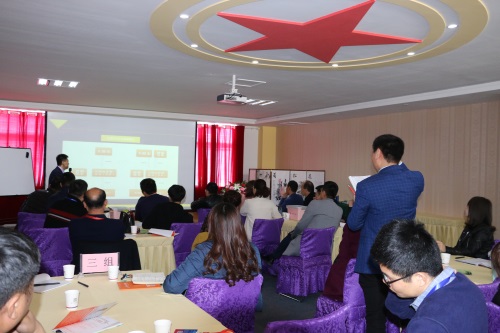顶层架构设计是指在软件开发或系统设计中,对整个系统进行整体规划和设计的过程。与其他层次的架构设计相比,顶层架构设计具有以下特点和区别:
Top-level architecture design refers to the process of overall planning and design of the entire system in software development or system design. Compared with other levels of architecture design, top-level architecture design has the following characteristics and differences:
综合性和整体性:
山东顶层架构设计关注整个系统的综合性和整体性。它涉及到系统的总体结构、组件之间的关系、数据流动和交互等方面,以确保系统能够满足整体需求和目标。
Comprehensiveness and integrity: The top-level architecture design in Shandong focuses on the comprehensiveness and integrity of the entire system. It involves the overall structure of the system, the relationships between components, data flow, and interaction to ensure that the system can meet overall requirements and goals.
概念层次和抽象层次:顶层架构设计通常处于较高的概念层次和抽象层次。它关注系统的核心功能和关键问题,而不涉及具体实现和细节设计。它为后续的详细设计提供指导和约束。
Conceptual level and abstract level: The top-level architecture design is usually at a higher conceptual level and abstract level. It focuses on the core functions and key issues of the system, without involving specific implementation and detailed design. It provides guidance and constraints for subsequent detailed design.
决策和风险管理:顶层架构设计需要考虑各种决策和风险管理。比如,选择适当的技术平台和框架、确定系统的可扩展性和可维护性、评估和解决潜在的风险等。这些决策和管理对系统的长期发展和成功至关重要。
Decision making and risk management: The top-level architecture design needs to consider various decisions and risk management. For example, selecting appropriate technology platforms and frameworks, determining the scalability and maintainability of the system, evaluating and addressing potential risks, etc. These decisions and management are crucial for the long-term development and success of the system.

需求和业务导向:顶层架构设计应该紧密关联系统的需求和业务目标。它应该与业务需求对齐,并确保系统具备满足业务需求的能力。在设计过程中,需求分析和业务理解是非常重要的。
Requirements and business orientation: The top-level architecture design should be closely related to the system's requirements and business objectives. It should be aligned with business requirements and ensure that the system has the ability to meet business requirements. Requirements analysis and business understanding are crucial in the design process.
其他层次的架构设计则更关注于系统的特定方面和细节,如模块化设计、数据架构设计、安全架构设计等。这些设计通常基于顶层架构设计的指导和约束,负责系统的具体实现和技术细节。
Other levels of architecture design focus more on specific aspects and details of the system, such as modular design, data architecture design, security architecture design, etc. These designs are usually based on the guidance and constraints of top-level architecture design, responsible for the specific implementation and technical details of the system.
顶层架构设计是系统设计过程中的首要步骤,它确定了系统的整体结构和核心问题的解决方案。其他层次的架构设计则进一步深入到系统的具体细节和子系统,以实现顶层设计的目标和要求。
The top-level architecture design is the first step in the system design process, which determines the overall structure of the system and the solutions to core problems. The architecture design at other levels further delves into the specific details and subsystems of the system to achieve the goals and requirements of the top-level design.
The two complement each other and work together to build a robust, scalable, and compliant system. For more related matters, come to our website http://www.lushangyun.com Consult and learn more!


 13698613138
13698613138


